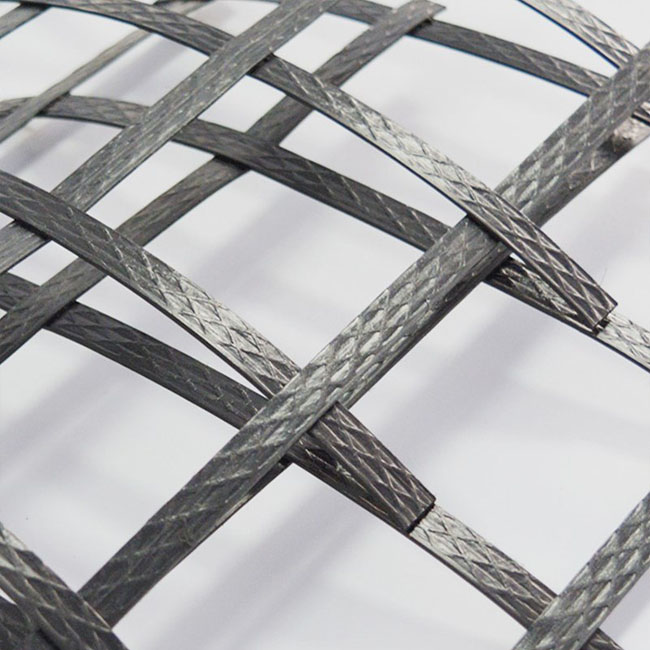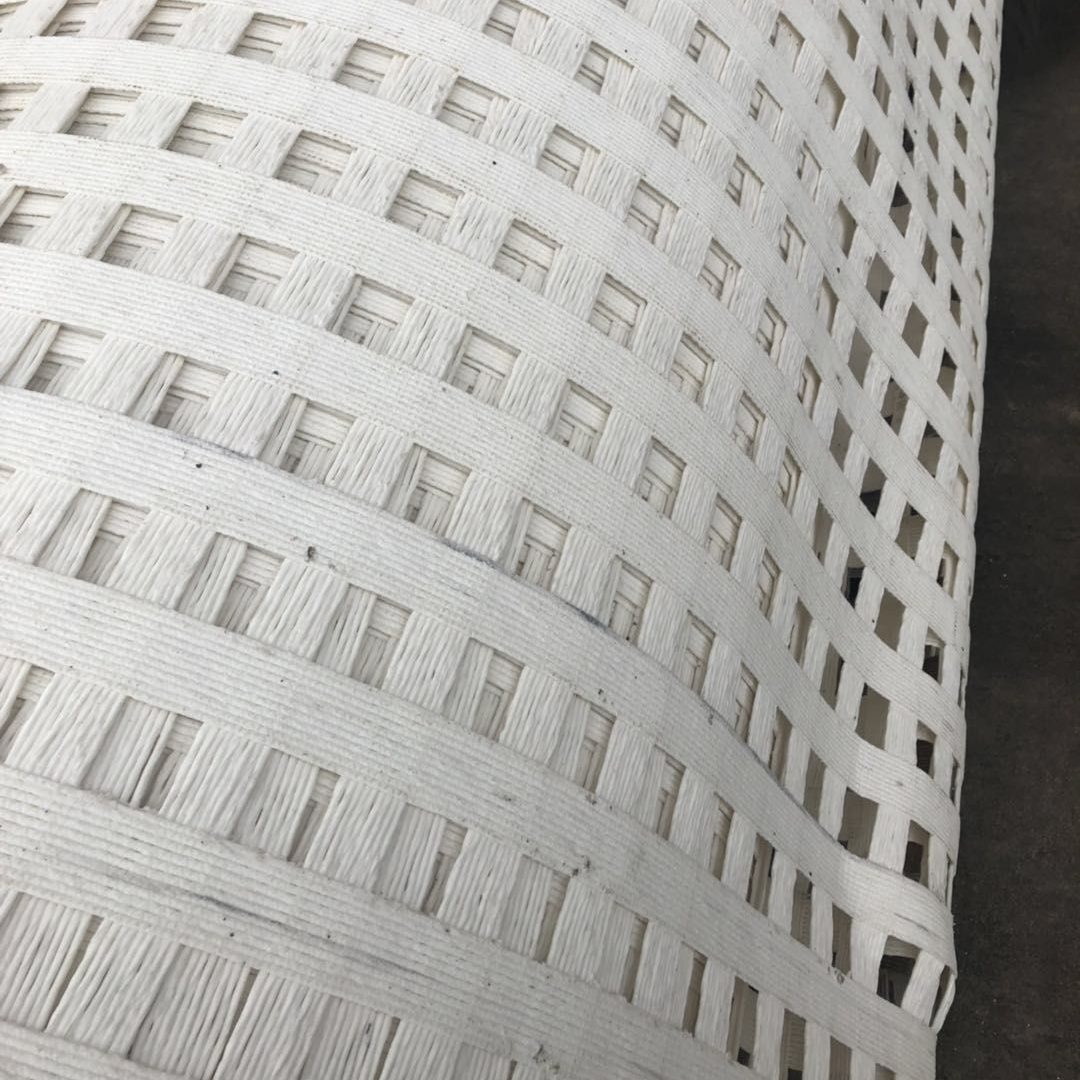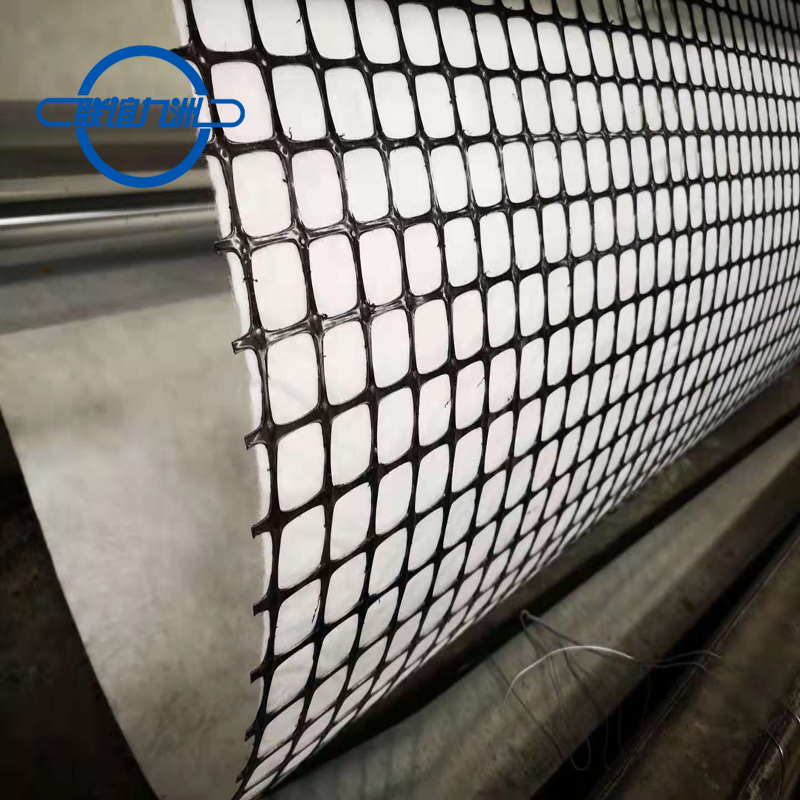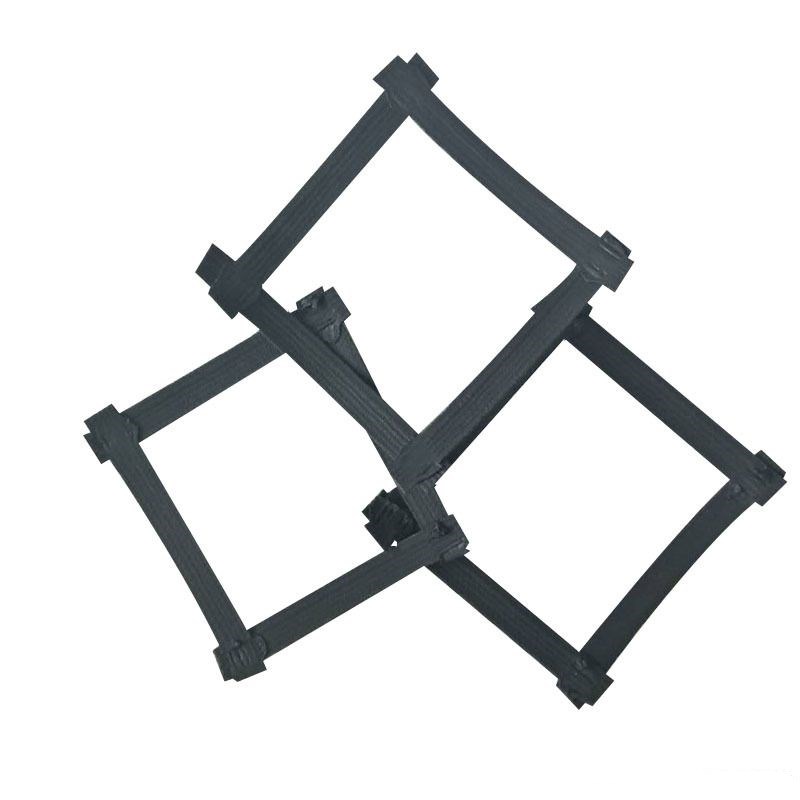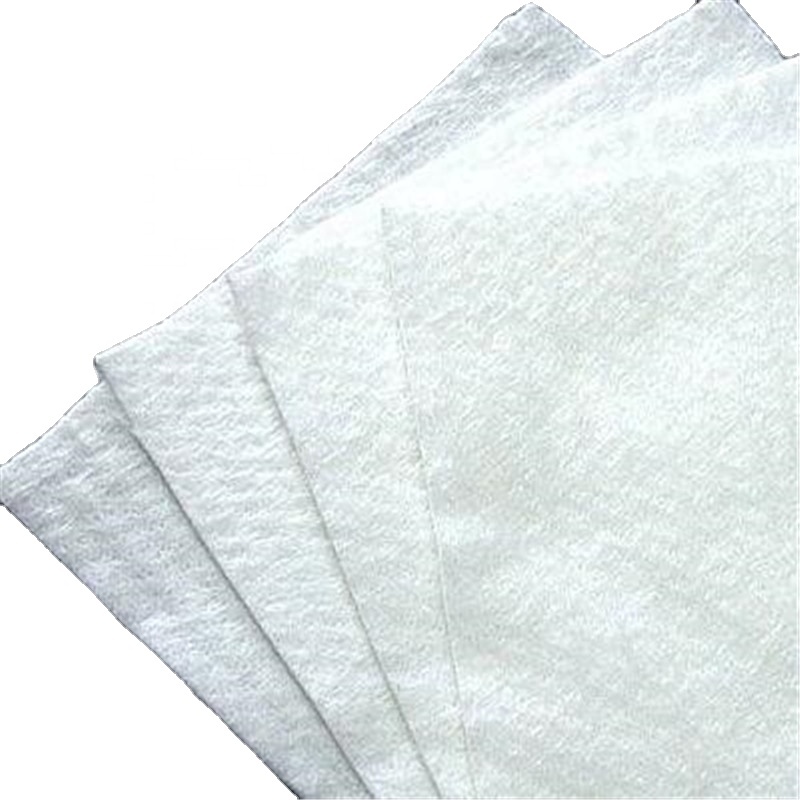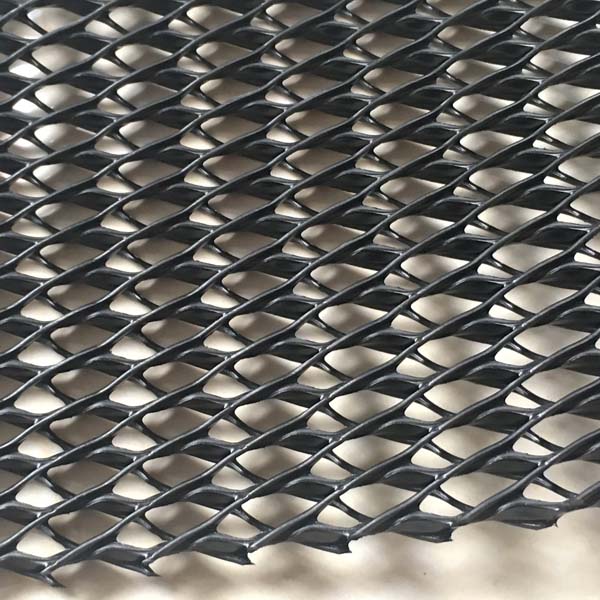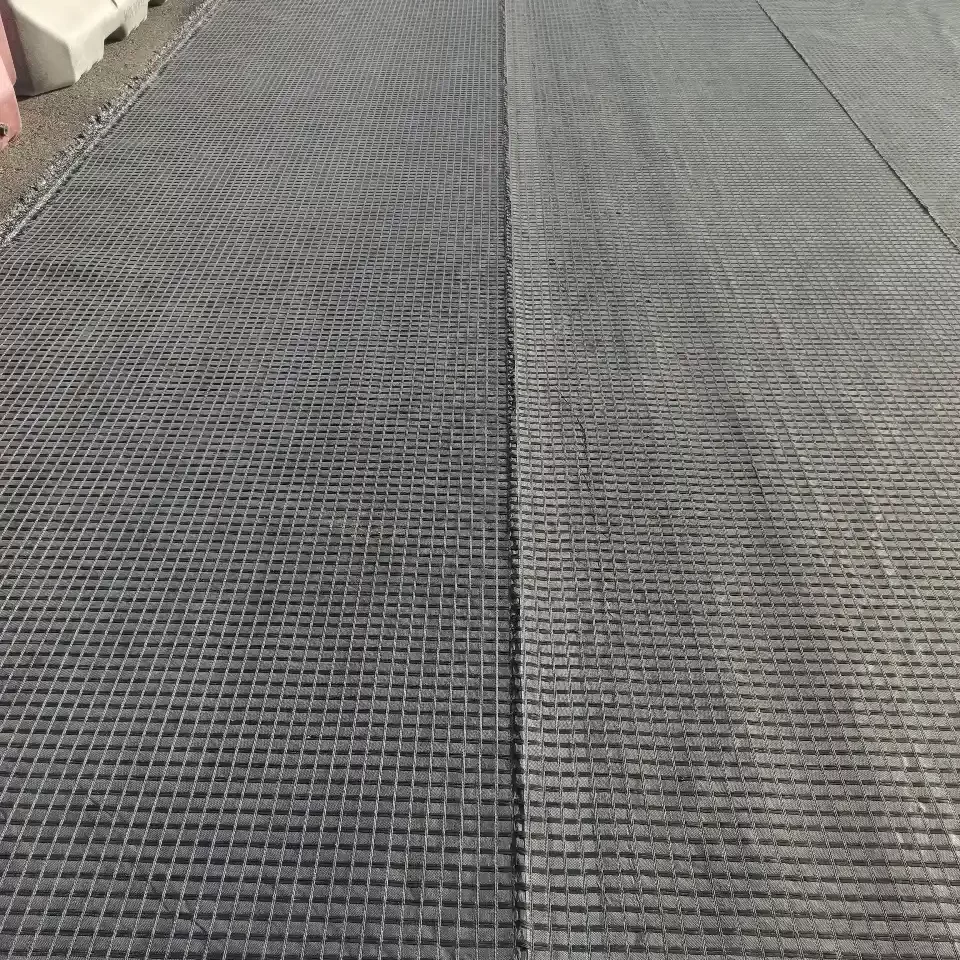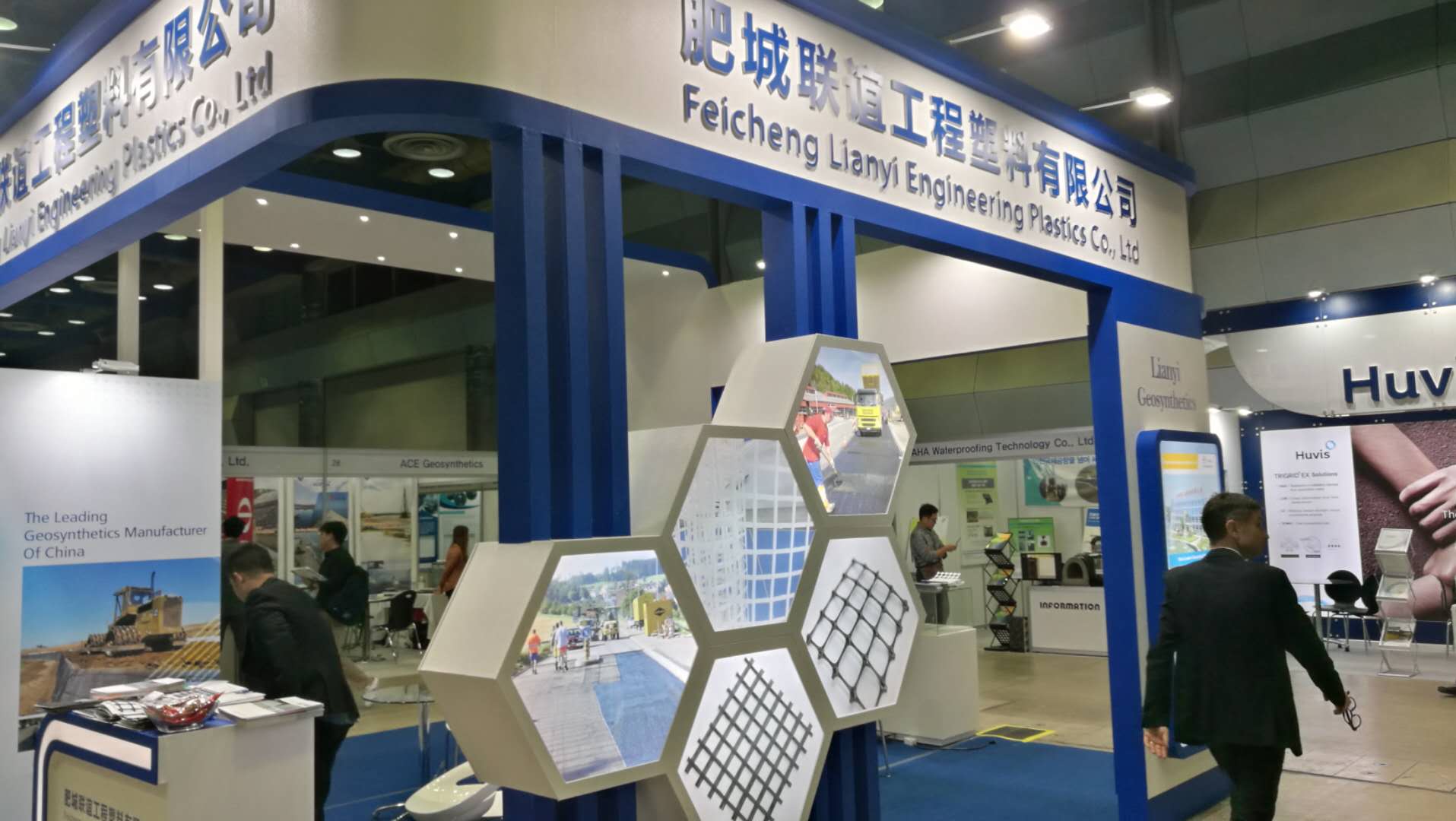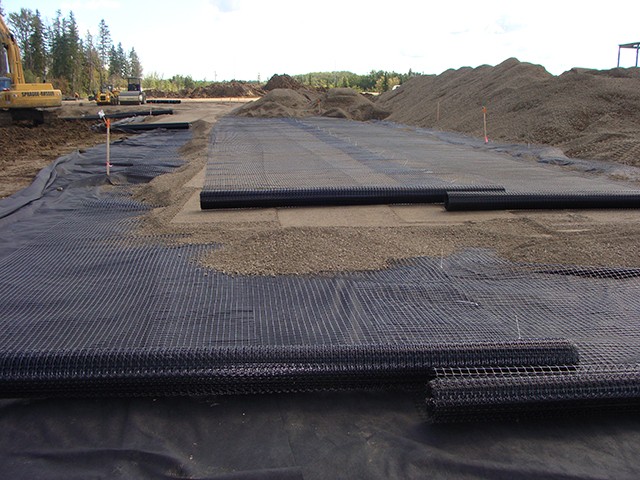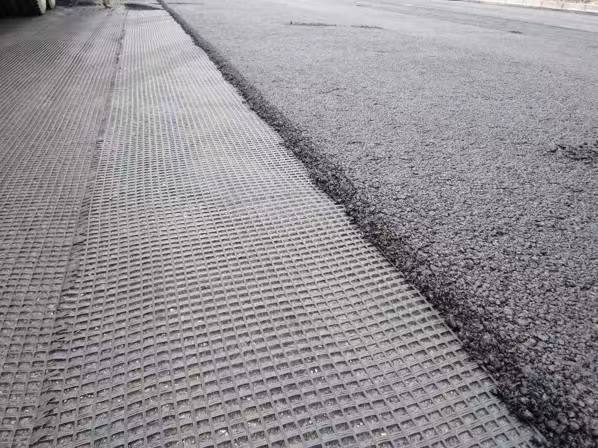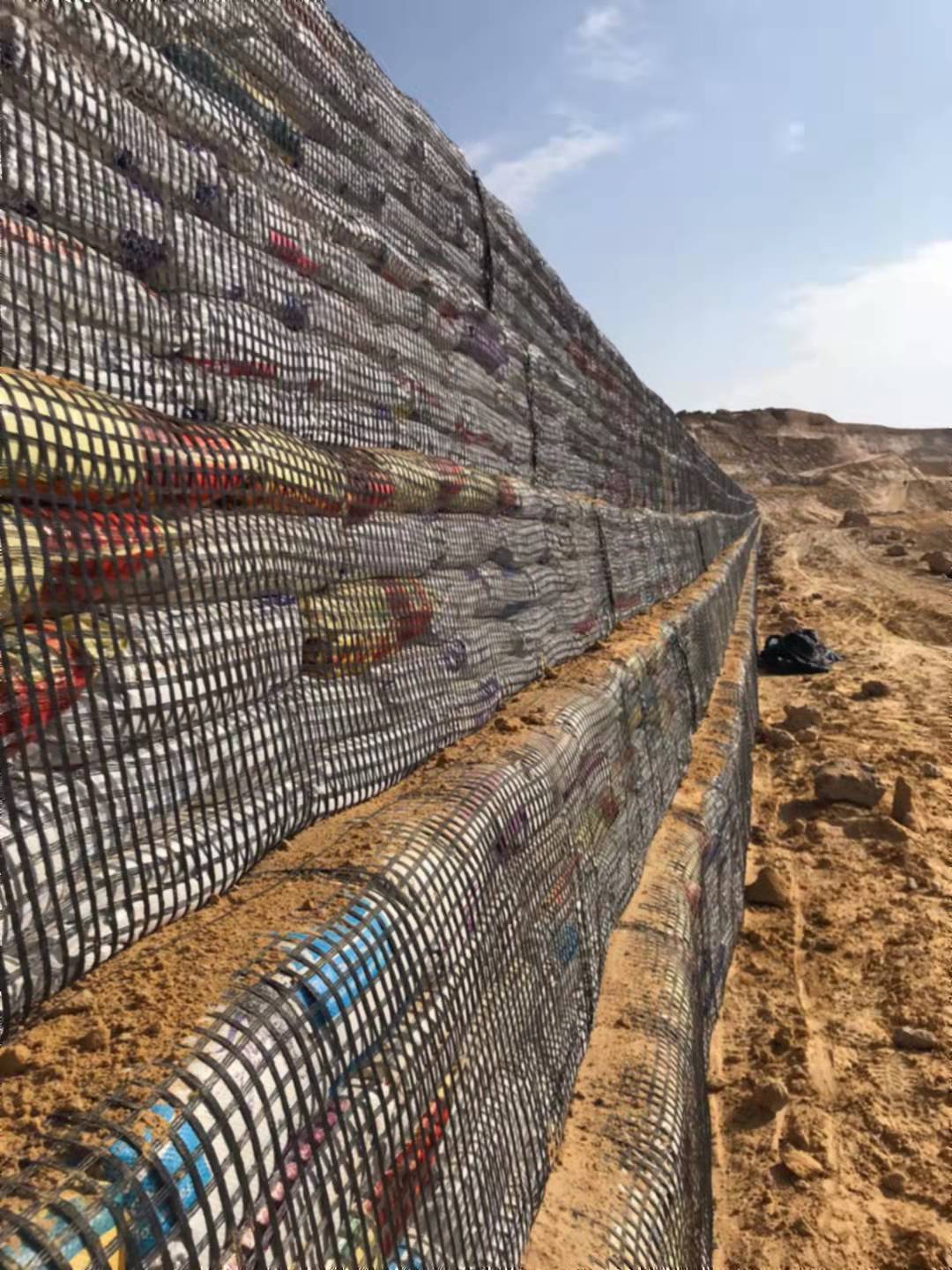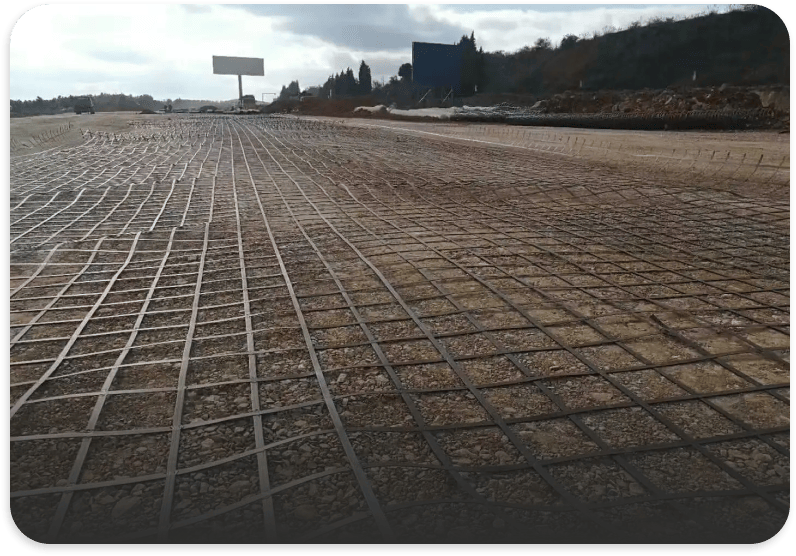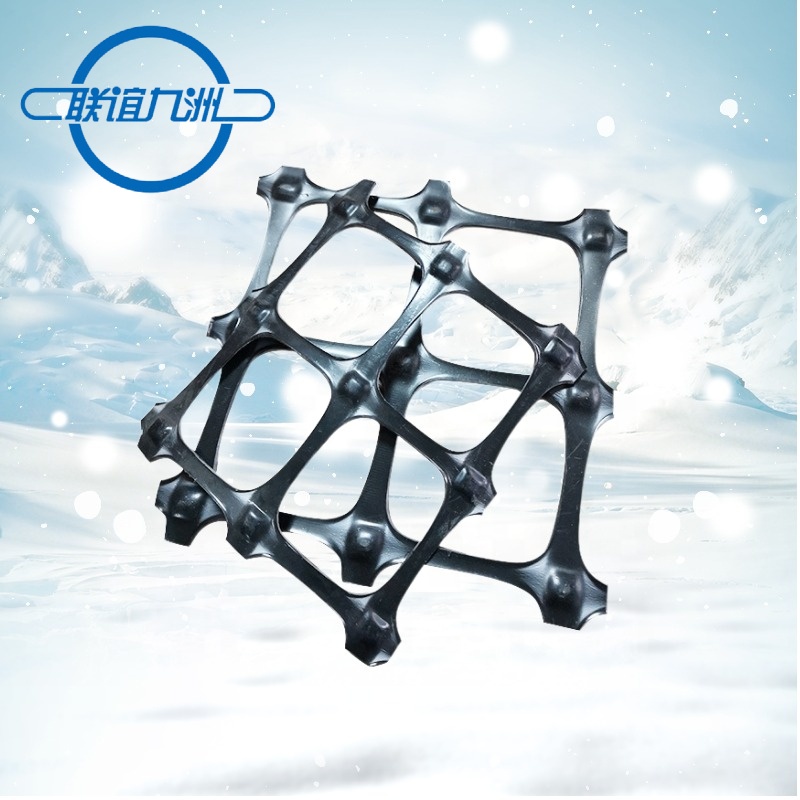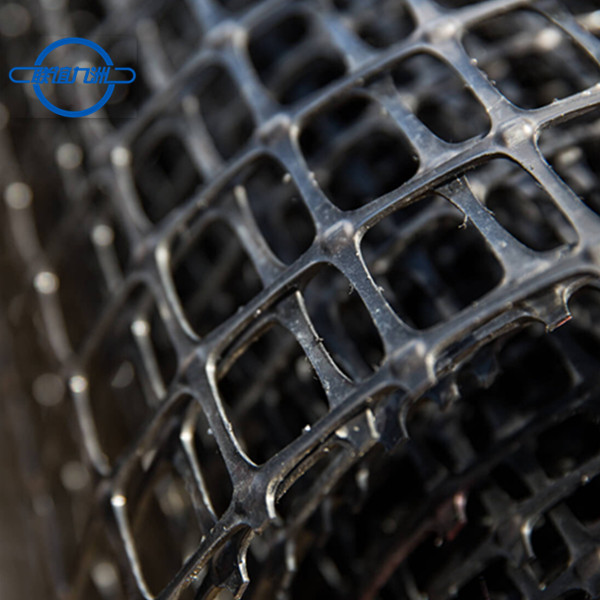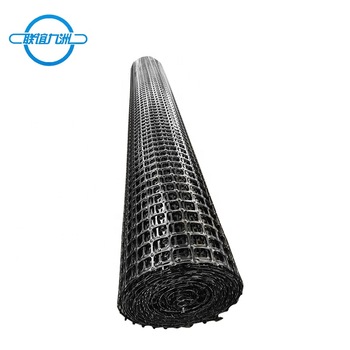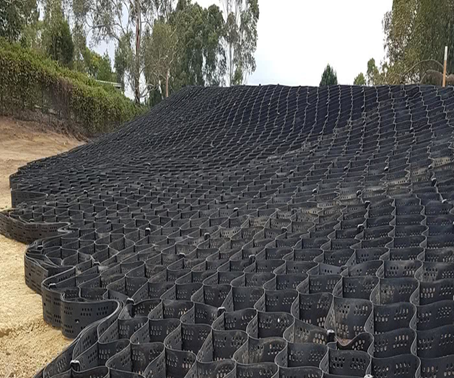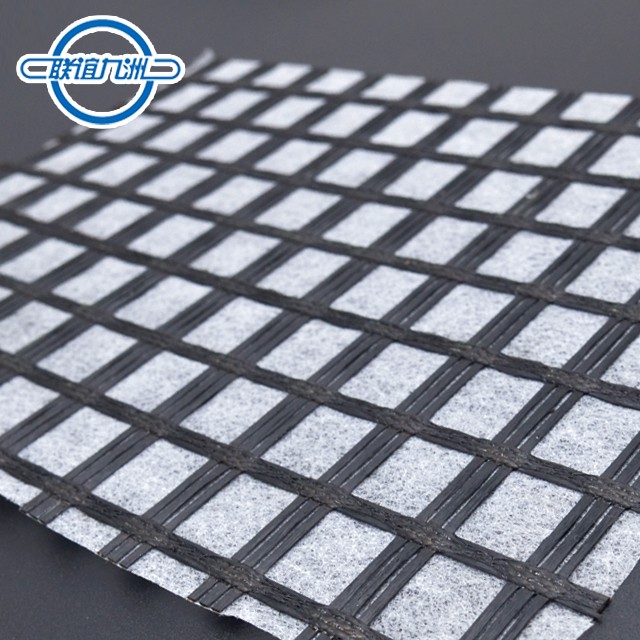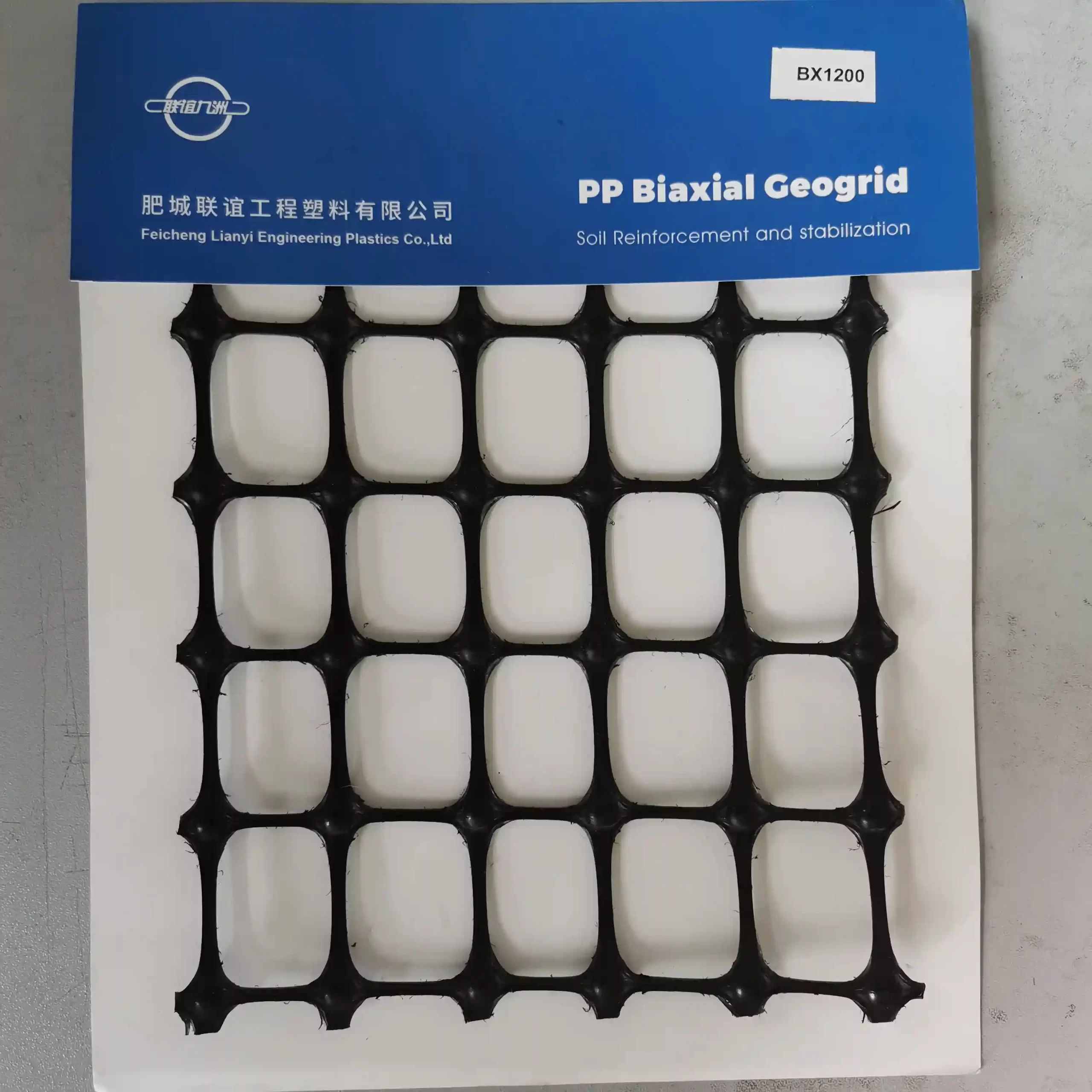PP (Polypropylene) extruded geogrids with large aperture sizes are particularly suitable for applications involving gravel. These geogrids provide excellent interlock with coarse aggregates, enhancing stability and load distribution.The primary differences between large aperture size extruded geogrids and regular (smaller) aperture size extruded geogrids lie in their design, performance, and suitability for different applications. Here’s a detailed comparison:
Aperture Size and Structural Design
- Aperture Size:
- Large Aperture Geogrid: Typically has apertures larger than 50 mm, such as 65 mm or more.
- Regular Aperture Geogrid: Usually has smaller apertures, typically ranging from 25 mm to 50 mm.
- Structural Design:
- Large Aperture Geogrid: Designed with wider spacing between the ribs, which can reduce the overall weight of the geogrid and allow for better interlocking with coarser aggregates.
- Regular Aperture Geogrid: Features closer rib spacing, providing a more uniform support structure for finer materials.
Performance Characteristics
- Load Distribution and Reinforcement:
- Large Aperture Geogrid: More suitable for reinforcing coarse aggregates, providing excellent load distribution and interlock with larger particles. This makes them ideal for applications with heavy loads and where large aggregate sizes are used.
- Regular Aperture Geogrid: Offers better support and interlock with finer materials and soils, ensuring effective reinforcement and load distribution in applications where smaller aggregate sizes are prevalent.
- Flexibility and Handling:
- Large Aperture Geogrid: Generally lighter and more flexible due to the larger openings, making it easier to handle and install in some applications.
- Regular Aperture Geogrid: Heavier and less flexible due to the smaller openings and closer rib spacing, which can provide more rigidity in certain reinforcement scenarios.
Quality analysis systems
ASTM International Standards:
- ASTM D6637: This standard specifies the test method for determining the tensile strength and elongation of geogrids.
- ASTM D5262: It details the test methods for evaluating the creep and creep rupture behavior of geogrids.
- ASTM D6638: This standard covers the test methods for determining the junction strength of geogrid.
Benefits
- Enhanced Aggregate Interlock
- Better Locking: Larger apertures allow for improved interlocking with coarse aggregates, such as gravel, enhancing stability.
- Load Transfer: Improved mechanical interlock facilitates better load transfer and distribution, reducing displacement and deformation.
- Improved Drainage
- Water Flow: The larger openings enable better water drainage, reducing waterlogging and maintaining soil integrity.
- Erosion Control: Enhanced drainage capabilities reduce the risk of erosion in areas with significant water flow.
- Ease of Installation
- Handling: The larger apertures make the geogrid lighter and easier to handle, simplifying installation.
- Speed: Faster deployment due to the ability to cover more ground quickly and efficiently.
- Applications
- Soil Stabilization: Ideal for projects involving coarse aggregates where improved interlock is crucial.
- Road Base Reinforcement: Suitable for unpaved and paved roads to prevent rutting and improve load-bearing capacity.
- Erosion Control: Effective in preventing soil erosion along riverbanks, slopes, and embankments.
- Drainage Applications: Suitable for areas requiring enhanced drainage and water management.
Regular Aperture Geogrids
Characteristics
- Aperture Size: Smaller, typically ranging from 20 mm to 40 mm.
- Material: Also made from high-density polypropylene (PP) or similar durable polymers.
- Weight: Heavier than big aperture geogrids due to smaller openings, with weight often exceeding 700 g/m².
Benefits
- Fine Aggregate Interlock
- Tighter Locking: Smaller apertures provide better interlock with fine aggregates and soils, improving stabilization.
- Uniform Load Distribution: Suitable for distributing loads more evenly in finer-grained soils and aggregates.
- Reinforcement in Thin Layers
- Layer Compatibility: More suitable for applications requiring thinner layers of reinforcement, such as asphalt overlays.
- Flexibility: Provides flexibility and adaptability in various soil types and conditions.
- Applications
- Pavement Reinforcement: Ideal for reinforcing asphalt overlays, preventing reflective cracking, and enhancing pavement longevity.
- Subgrade Stabilization: Suitable for stabilizing fine-grained soils and improving the bearing capacity of the subgrade.
- Retaining Walls: Effective in reinforcing soil structures and retaining walls where fine aggregates are used.
- Slope Stabilization: Provides stability and erosion control on slopes with fine-grained soils.
Comparison Summary
| Feature | Big Aperture Geogrid | Regular Aperture Geogrid |
|---|---|---|
| Aperture Size | 40 mm to 100 mm or more | 20 mm to 40 mm |
| Aggregate Interlock | Better for coarse aggregates (e.g., gravel) | Better for fine aggregates and soils |
| Load Distribution | Enhanced load transfer and distribution | Uniform load distribution for finer materials |
| Drainage | Improved water flow and drainage | Suitable for areas with less critical drainage needs |
| Ease of Installation | Lighter and easier to handle | May be heavier and slightly more challenging to install |
| Applications | Soil stabilization, road base, erosion control, drainage | Pavement reinforcement, subgrade stabilization, retaining walls, slope stabilization |
